“… rather than the closed object, the maximum expression of design today is the process—the activation of open systems, tools that shape society by enabling self-organisation, platforms of collaboration independent of the capitalist model of competition, and empowering networks of production”.
Joseph Grima, Adhocracy
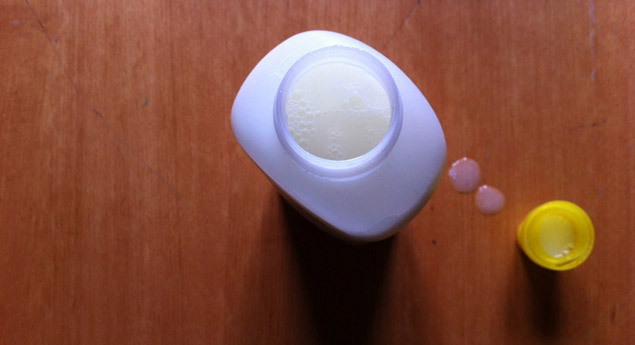
Detergent De veí a veí.
We are holding a one-litre bottle of liquid detergent in our hands. It doesn’t have a label or a brand yet. A few days ago, it was vegetable oil that had been used for cooking. All it took was a bit of curiosity, some environmental awareness, a few Internet searches and a citizen network to light a spark and spread an idea. The detergent, which has been made in one of the kitchens in the neighbourhood, is being tested by the local residents. Now they need a space for their project, so that they can take the manufacturing process out of the kitchens and junk rooms of people’s apartments and, if possible, set up a distribution network in the local area.
The city, unemployment and a new labour model
In the early twentieth century, smoke coming out of chimneys was a symbol of progress and a sign of the industrial fabric of cities. In the middle of the same century, factories shifted to the outskirts of cities, and office blocks appeared along with citizens who had been trained in the professions demanded by a production apparatus that was increasingly focused on specialisation.
Nowadays, the capitalist strategy of offshoring has shifted the centres of production to emergent countries (euphemisms aside), leaving behind citizens who are forced to abandon their dreams and the hope of finding jobs that will allow them to access the lifestyle they had been promised, even though they had spent years being trained for these jobs.
A city is a dynamic system of changing equilibriums, reflecting the constant negotiation between different and sometimes antagonistic parties. This situation is partially expressed in the built space: infrastructures, buildings, and supply and transport systems. The flow of information, matter and energy through human and non-human components is a daily phenomenon that is boosted by the heterogeneity of all of these elements [1]. From this point of view, the city is not an inherited concept, or a series of spaces organised according to a master plan; it is a reality that is built day by day [2].
In Europe, this dynamic phenomenon has become especially apparent in recent times. Crisis is a form of government that benefits from the idea of cities and countries brought to a standstill by the tensions that are at play, from the idea of scarce monetary resources that justify social cut-backs. There is a tendency to insist that the only way to reverse the situation is by applying variations of the same formulas under different names. Politicians, who have a limited scope of action due to all the conditioning factors that are brought into play, barely connect to the real drives and demands of citizens. They basically keep trying to seduce citizens with the idea of a state of continual growth, when, in practice, we have seen that only a few end up reaping all the benefits. It is like a gigantic Ponzi scheme, but one that is governed by laws and regulations that are difficult for citizens to understand. But with the passing of time, these kinds of political approaches are weakening their hold on citizens who are starting to communicate and behave in a distributed way, because they have become producers as well as receivers of information.
The resulting frictions are expressed in the form of social unrest and can generate a “rise in temperature” that turns into protest. This is normal and necessary. Nonetheless, it is inspiring to see that part of this energy is not dissipated – it is transformed into social empathy and action. This energy that is transformed into an interest in the real needs of family and neighbours can also trigger movement and changes in the environment. The flows of matter, information and energy show us the city as a thermodynamic phenomenon. The energy that comes from sources sold by large corporations converges with an empathetic source of citizen-generated energy that has the power to transform the environment. So citizens discover that they are also an energy source that can bring about urban change. In a dynamic that is similar to networked spaces of interaction or to the connections generated in complex systems, the city can supply spaces that are appropriate for these interactions, thanks to the demographic concentration of the agents mentioned, irrespective of the economic situation.
Urban wellbeing is closely related to the kind of work, coexistence and development opportunities that cities offer. In the current situation of scarcity, mobility of capital, and offshoring of sources of employment, it’s hard to foresee how people who are excluded from the labour market will find means for survival. And to put the task of providing abundance in the hands of the same system mechanisms that provoke scarcity would be naive, at the very least.
Spaces of interaction and citizens who make things
In Spain, the effects of the current economic situation have included the shutting down of companies and businesses [3]. The same situation can be seen metaphorically in the closure of bank branches as a result of the restructuring of the financial system. As a consequence of this, a series of spaces “without use” are appearing in cities – spaces that have been emptied of human activity, but continue to negotiate their equilibrium within the urban system [4]. These spaces, which are connected to essential services (water, electricity, broadband), are uniformly distributed in population centres and can also become spaces for civic and political education.
Civic practices and culture are forged through plural, distributed flows and associations that do not just take place in squares, parks and streets. Spaces of citizen education and political participation also cover the micropolitics of work, school and shared domestic spaces. To wait for unused spaces to be absorbed by the property market, to be sold or rented, is like expecting good results to come out of the same formulas that have generated the current situation. Given this situation, one possible alternative is to favour conditions that can allow transitional activities to take place in these spaces, so that citizens can used them in non-conventional ways, experimenting with new approaches to work and expanding the radius of their micropolitical action.
The case of the detergent mentioned at the start of the post is an example of citizens who put their energy and empathy into suggesting solutions that respond to local needs. These are educated, active citizens who make things, who are motivated by the drive to solve a specific problem and do not accept answers to fictitious needs created externally. These urban makers suggest possible solutions based on the tools and information that they have at hand. They are optimistic above all, and they are convinced of the power of self-supply, self-sufficiency and team work – qualities that are essential in order to come up with new solutions that have not yet been imagined by corporations or public institutions. If a community is aware of the possibility of creating real solutions for local problems and even reversing unemployment, giving them access to the new types of open hardware that they can use to develop products or services can trigger interesting responses. Using empty shops or buildings to house MakerSpaces – places that are fitted out so that people can gather, share ideas and make things – is one promising possibility.
The Industrial Revolution contributed to the unlimited production of identical, increasingly sophisticated goods that required specialised professionals to produce them. We are now witnessing a new revolution based on limited production and prototypes, what Chris Andersonhas called a “new Industrial Revolution”. The entry barriers that have been firmly in place since the last Revolution are now being swept away by access to information and tools that can also be modified. This new production paradigm does not need big production lines or factories with highly standardised industrial processes. What we need are spaces for interaction, where the ideas of citizens who have training and experience can mix, cross-fertilise and spread. Rather than big factories, we need workshops and networks to strengthen them locally and connect them globally. Aside from low-tech examples such as the detergent made out of used cooking oil, there are also more complex projects that use technology that has become readily available, such as 3D scanners or printers, laser cutters and open hardware and electronic platforms like Arduino.
According to Anderson, the Maker movement shares three transformative characteristics that radically shorten the path between an idea and entrepreneurship, just as the Web did with software, information and content [5]:
- People using digital desktop tools to create designs for new products and prototype them (digital DIY).
- A cultural norm to share those designs and collaborate with others in online communities.
- The use of common design file standards that allow anyone, if they desire, to send their designs to commercial manufacturing services, just as easily as they can fabricate them on their desktop.
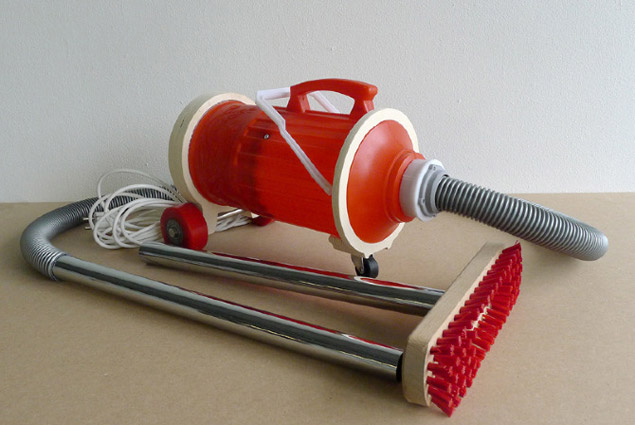
Improvised Vaccum. Transparent Tools by Jesse Howard.
These kinds of processes can be found in designs such Jesse Howard’s Transparent Tools, which is a family of household appliances in which users are encouraged to be actively involved in producing, repairing and modifying their own products. Other examples include the variations of Street Food Printing, developed by Paco Morales, GGLab, Luis E. Fraguada and Deniz Manisali; Stratigraphic Manufacturing, by Unfold, which explores a new model for fabricating porcelain pieces that can be produced locally, with designs that can be shared globally, allowing additions to be made to the original model depending on the local production context; and ELIOOO, a home hydroponic cultivation system that subverts IKEA instruction manuals, developed by Antonio Scarponi and made possible through a crowdfunding campaign.
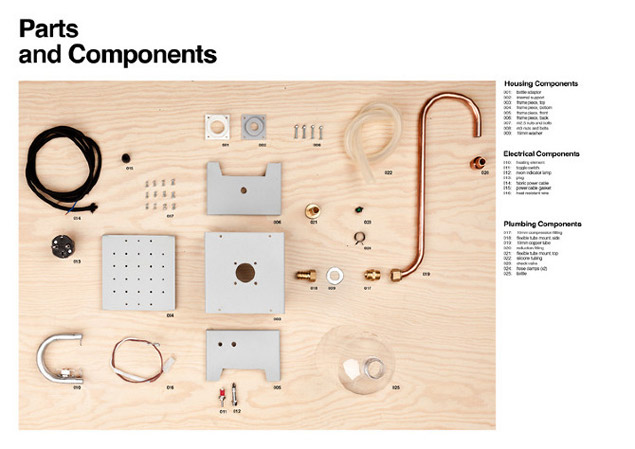
Parts and components. OS Waterboiling by Jesse Howard.
As new kinds of open technology become available, there is also an increasing number of online platforms for education and information sharing. Some, such as iFixit and Make, operate along similar lines to the now-defunct Platform 21, which became famous for its Repair Manifesto. Other platforms such as Open Structures explore the possibility of a modular construction system in which “everyone designs for everyone” on the basis of a shared geometric grid, like a kind of collaborative Meccano.
In the academic sphere, platforms such as Coursera, Khan Academy and many other MOOCs offer an evolution of the conventional classroom, allowing students to access blocks of training and information that would otherwise be inaccessible to many because of the expensive course fees and travel costs involved in studying at prestigious universities. Although there has been criticism of MOOCs, particularly because they can be perceived to be part of the privatisation of communication and open learning, they are undoubtedly a new alternative to traditional means of education and training.
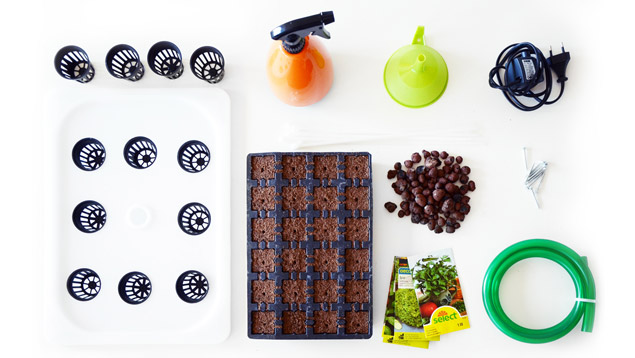
Parts and Components. ELIOOO by Antonio Scarponi.
Workspaces set aside for sharing experiences and promoting collaboration exist all over the world. In Barcelona, these spaces in which people can meet to fabricate and Do It With Others (DIWO) include MOB, which is already revving up for the city’s first Maker Fair, and which is also a co-working space. There are others that focus on developing innovation, such as MakerConvent for example, a project based on a philosophy of proximity that teaches unemployed adults how to use new digital media for audiovisual creation and production. Another benchmark project is the FabLab run by the IAAC, which is also working on the Valldaura Self Sufficient Lab, a project that revolves around permaculture and energy self-sufficiency. This project is interesting in that it does not focus on developing products, but on encouraging a lifestyle and culture that is conscious of material resources, energy flows and food cycles.
In the United States, the GenSpace project suggests that citizens can break limits that used to be set aside for highly specialised professionals. This space, based in New York City, is dedicated to promoting citizen science and access to biotechnology. In 2010 they opened up the first community Biosafety Level One biotechnology laboratory for users, which runs extracurricular activities for students and encourages scientific entrepreneurship in emerging fields such as synthetic biology. Perhaps in the not-too-distant future we won’t be surprised if it turns out that the kid next door is developing a biolaser to study the interaction between biological systems at the macroscale and quantum levels.
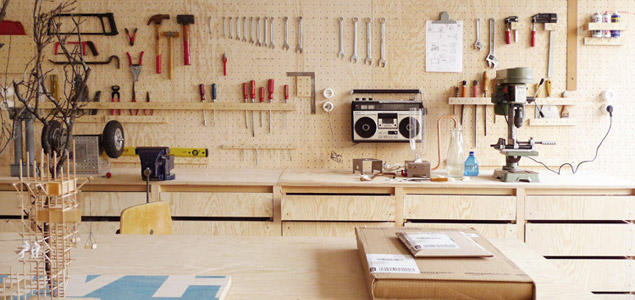
Open Structures Workshop. Brussels.
Combining matter, energy and information.
Customised online education, open hardware, subverting industrial processes, personalised fabrication, new crowdfunding models and experiments with local currency, combined with the detection and strengthening of pre-existing local networks, are an inspiring combination that can spark new processes for sharing and renewal in cities that are suffering from financial recession processes.
The way production is organised has led us to understand work as something that we find, rather than something we create. We need to question the nature of work, and the Maker movement can give us some clues to new meanings that can create value and build a citizen infrastructure [6]. But we also need to question forms of remuneration, and generate new forms of exchange that is also based on similar doses of creativity. Creative entrepreneurs without money are here to stay, and even if crowdfunding models or currency experiments such as Bitcoin are not necessarily going to resolve everything, at least they open up new paths that we can follow. Swapping “creative products” using currency (physical or electronic) that finds its way into the hands that produce more easily than the hands that speculate is a challenge that is still unresolved.
Keeping up the current rhythm of industrial production seems like a dangerous idea, and it makes little sense to defend constant growth as the way out of the crisis. We need ideas and strategies that can temper this voracity, and that can provide a transition that will sow the seeds for stronger relational networks. These networks will then be able to configure urban connections of a new kind, in tune with the real needs of citizens. The Maker philosophy based on collaborative work, ongoing process, and DIWO is essential for coming up with a new way of organising work. And it must go hand in hand with a framework for citizen interaction that can guide activities according to what is best for the majority, in order to avoid potentially destructive uses of the new tools.
Understanding the flows of relationships, matter, energy and information that shape a city is a challenge for the authorities that manage the city. And understanding that energy variables that are not measured by efficiency indicators – such as citizen empathy – can bring about spatial change is an even greater challenge. The spaces and citizens mentioned in this post are showing us possible paths that take this into account. To promote the evolution of the factories and offices that were a symbol of the twentieth century, it would be interesting to promote the emergence of a network of citizen maker nodes that can come up with new processes and new forms of work and remuneration, by allowing the temporary occupation of the unused shops and buildings scattered throughout our city.
We are not talking about planning the city of the future as a place full of technological gadgets, but about learning to interpret and promote the energy interface that is generated between empathetic citizens and the spaces that they now inhabit and negotiate. And let the technology follow. [7]
Note: No people appear in the images that illustrate this post. This is a deliberate allegory, intended to remind you that you won’t find these people by simply looking on the Internet. They may share information here, but right now they are in some corner of the city… making things.
[1] Usman Haque. What Is a City that It Would Be ‘Smart’? Volume 34. Archis. Amsterdam 2012
[2] Domenico di Siena. “Sentient City. From Smart City to the City of Knowledge”. Lecture at Elisava School imparted on 24 January 2103
[3] For the exact figures, see: Álvaro Menéndez and María Méndez. Resultados de las Empresas no financieras. Cuarto trimestre de 2012 y avance del cierre del ejercicio. Banco de España. Boletín Económico, March 2013 (Retrieved on 03 April 2013).
[4] Ash Amin. Collective culture and urban public space. City, 12:1, 5 – 24. URL: http://dx.doi.org/10.1080/13604810801933495 (Retrieved on 03 April 2013)
[5] Chris Anderson. Makers: The New Industrial Revolution. New York 2012
[6] Dale Dougherty. Making Jobs. Make Blog. (Retrieved on 04 April 2013)
[7] Play on “Don’t ask about cities in the future. Focus on what’s happening in cities now and let the technology follow” by Usman Haque en Future Everything.

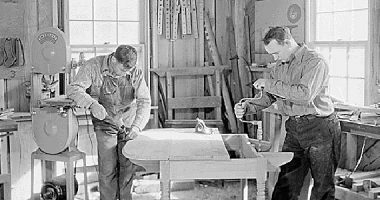
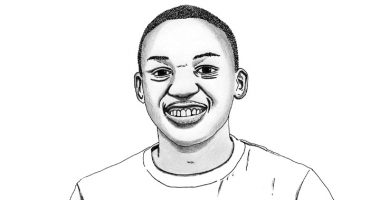
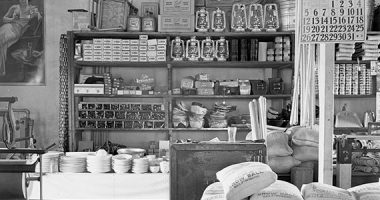
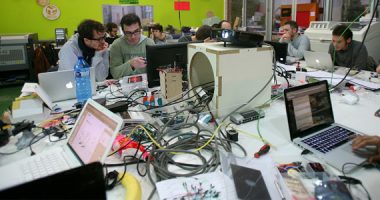
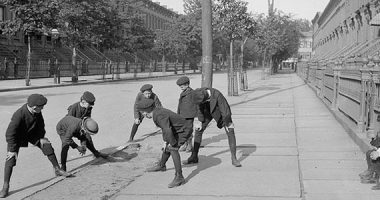
hari | 18 June 2013
Link to Ash Amin’s book is a not-so-open-access, though..
Equip CCCB LAB | 19 June 2013
Unfortunately You are right. But We can offer you a solution. There is another project at CCCB called PUBLIC SPACE where they published an article by Ash Amin called: “Collective culture and urban public space” (2006) available at http://www.publicspace.org/en/text-library/eng/b003-collective-culture-and-urban-public-space
We hope this is useful.
jose luis martinez llopis | 05 October 2013
extremely illuminating. Apparently, being together as co-workers is easier than getting together as citizens.
Congratulations.
J.
Pablo Calderón Salazar | 19 December 2014
Thanks for joining the dots César (I interpret that is what you did). The dots between the reinvention of ‘labour’ –including citizens in the discussion– and the growing vacancy that is changing the shape and organization of cities.
The cited projects, though, stand at both sides of the spectrum. The challenge today is to bring them together (the maker culture with the citizen’s movements). Interesting to look into the concept of Living Labs, which attempt to do so.
Leave a comment